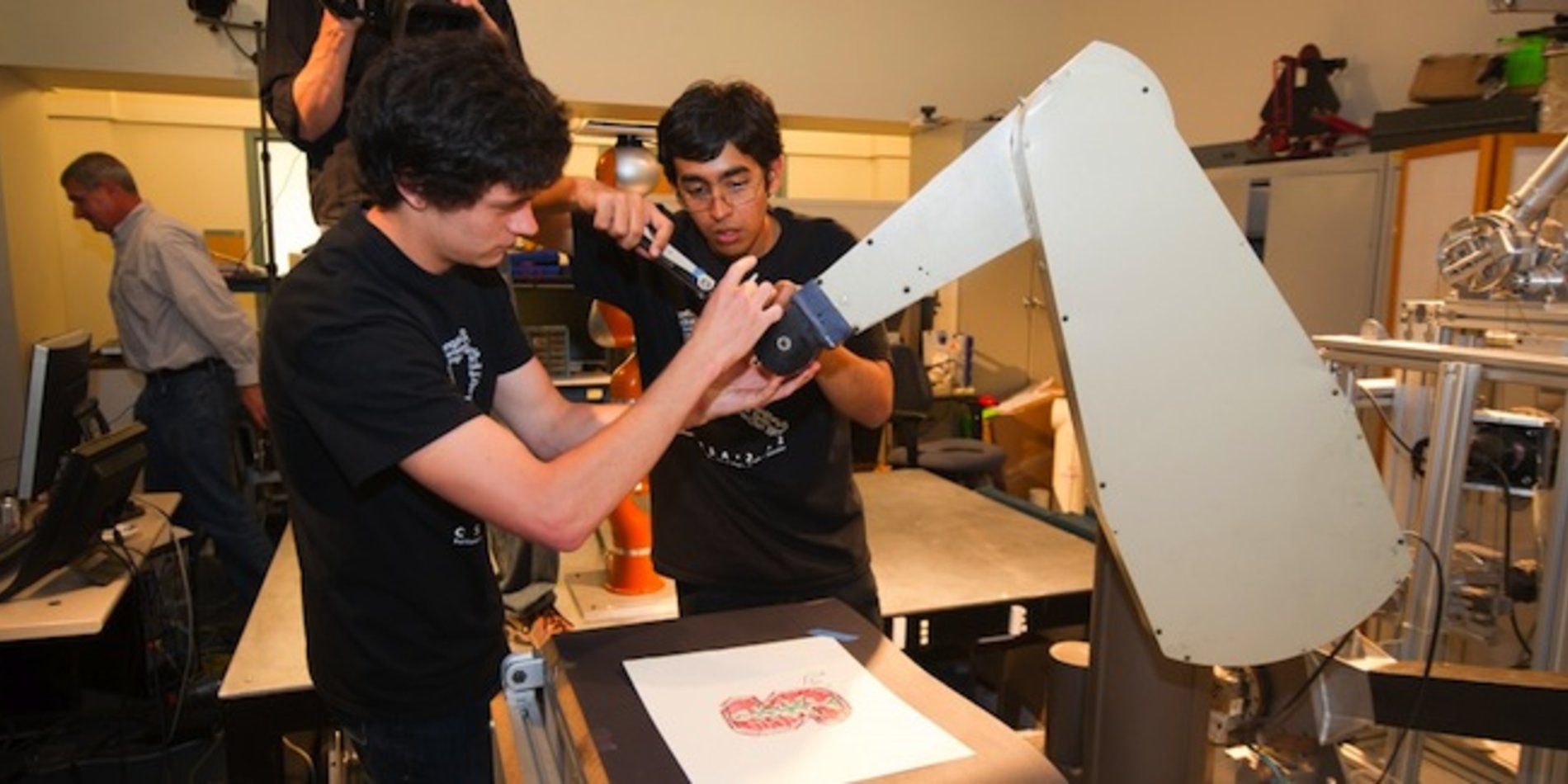Stanford student-designed robots play games, make art, try to catch a toy helicopter
The first order of business during final presentations in Computer Science 225A, Experimental Robotics, was to get into uniform.
Professor Oussama Khatib enthusiastically tossed black T-shirts to class participants crowded in the basement of an engineering building that displayed in bold white letters a mashup of their names and the name of the course.
Suited up and ready to play, they were ready for the games to begin.
"I know there's going to be a lot of excitement," Khatib said to the packed room. "You've been working day and night. Thank you."
Gathered in teams of three or four, the students took turns showing off their creations – robots that play games, make art, help land a toy helicopter.
"Every year students come with all of these wonderful ideas," Khatib said. "They are so creative in conceiving a project that's exciting, interactive, dynamic."
Experimental Robotics is a spring quarter class for students who have basic knowledge of robotics. By the end of the course, they are expected to be able to design and build their own 'bot.
The day of final presentations brings friends and classmates together to cheer on the accomplishment of creating a machine that completes a task – or tries to. The game-day vibe is made complete with a table filled with snacks and soda.
Game day
First up were the games. One team designed a robot that plays snooker, a variation of billiards. Another group taught their 'bot how to play carrom, which looks a little like billiards mixed with table shuffleboard.
With some clicks on a nearby keyboard, the snooker-playing robot decided the best shot and hit the ball into the pocket – every time. Cheers erupted.
Khatib said the challenge with the games was that the robots needed to perceive where the item to strike was on the gameboard and then come up with a calculation to hit it.
"We saw robots are almost better than humans because they can do precise calculations of the direction, the impact location," Khatib said.
The class moved upstairs for the next set of demonstrations.
BOTicelli and RoDin channeled their artist namesakes to, respectively, sketch drawings and etch a relief from wax.
RoDin etched the Stanford "S" logo by scraping and scooping wax out with every stroke. The team was challenged by the wax's wavy imperfections.
The last project was a mobile helipad, controlled by a robot. The team's goal was to create a robot that could bring a helipad to a remote-controlled toy helicopter.
The challenges included the speed at which the helicopter came in for a landing, how steady the helicopter was flying and exactly where it was to hover for the robot to catch it.
During the class demonstration held in June, the helicopter never ended up making a perfect landing but got close several times – with onlookers holding their breaths in anticipation and sighing when a dipped wing knocked the aircraft off kilter.
"Working with robots is not easy," Khatib said.
But they are fun.
"Every project brings a lot of energy," Khatib said, "a lot of creativity."



